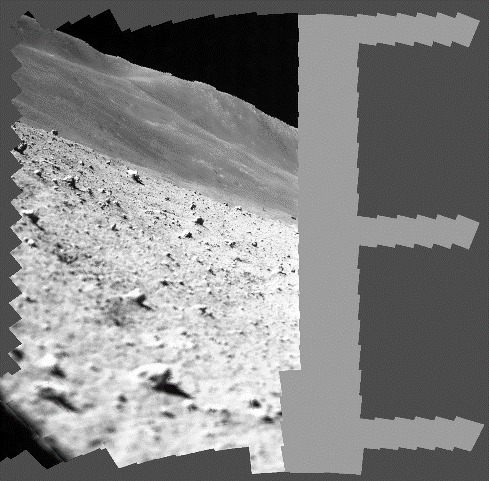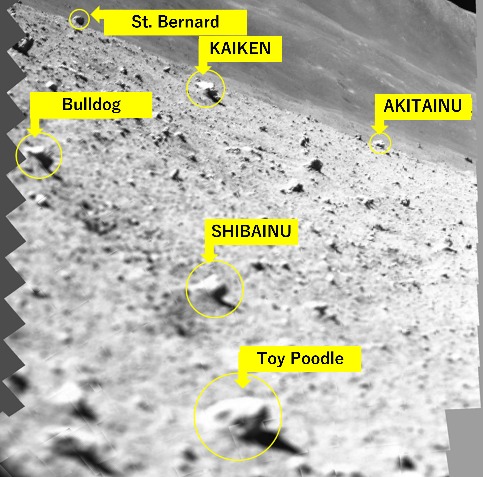The Japanese lunar spacecraft SLIM, which unsuccessfully landed on the Moon, sent the first photos of the lunar surface. The pictures show a world covered in debris in incredible detail. This lonely landscape, although beautiful, is the place where the Smart Lander for Investigating Moon (SLIM) lies upside down.

These photos were taken shortly before the Japan Aerospace Exploration Agency (JAXA) was forced to turn off the lander. It is unclear whether it will turn on again. The image is made up of 257 low-resolution monochrome photos taken by an onboard multi-band camera (MBC). The image is incomplete because the camera has stopped scanning.
SLIM was nicknamed the “Moon Sniper” because it had the capabilities and technology to make an accurate landing on the surface of our natural satellite. But the spacecraft, unfortunately, turned upside down, which blocked its solar panels, and they could not generate enough energy.
The Lunar Excursion Vehicle 2 (LEV-2 / SORA-Q) has successfully taken an image of the #SLIM spacecraft on the Moon. LEV-2 is the world’s first robot to conduct fully autonomous exploration on the lunar surface. https://t.co/NOboD0ZJIr pic.twitter.com/mfuuceu2WA
— JAXA Institute of Space and Astronautical Science (@ISAS_JAXA_EN) January 25, 2024
About 3 hours after landing, JAXA made the difficult decision to turn off the lander to save energy, hoping that if the Sun shone on SLIM’s solar panels in the future, it would be ready to turn on and resume operation.
However, in the short period of time before the shutdown, SLIM was still able to gather some useful information. Now the Japanese space agency has begun to identify rocks of interest to science. JAXA has even already given names to the largest stones in honor of various dog breeds.

Now the lander is located on the slope of the lunar crater Shioli. The position of the overturned spacecraft was shown by the tiny lunar rover LEV-2, which was released onto the surface of the Moon, along with the second rover LEV-1.
Despite the capsizing, JAXA considers the SLIM mission a success. First, both LEV-1 and LEV-2 payloads were deployed, and precision landing technology was demonstrated, ushering in a new era of lunar exploration.
If the Sun hits SLIM’s solar panels again, the mission will launch again and take a series of spectroscopic photographs that will help scientists determine the chemical composition of the moon’s surface. However, there is not much time left. On January 31, the Sun will set below the horizon, after which the probe will be silent forever, since its electronics are not designed for ultra-low temperatures on cold lunar nights.

Earlier, we reported on how NASA saw a problematic Japanese probe on the moon.
According to JAXA
Follow us on Twitter to get the most interesting space news in time
https://twitter.com/ust_magazin


